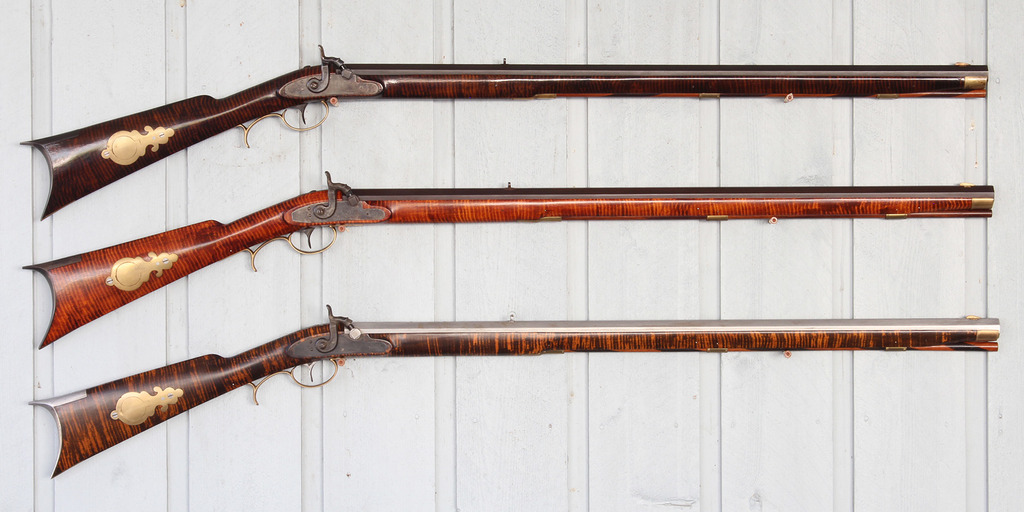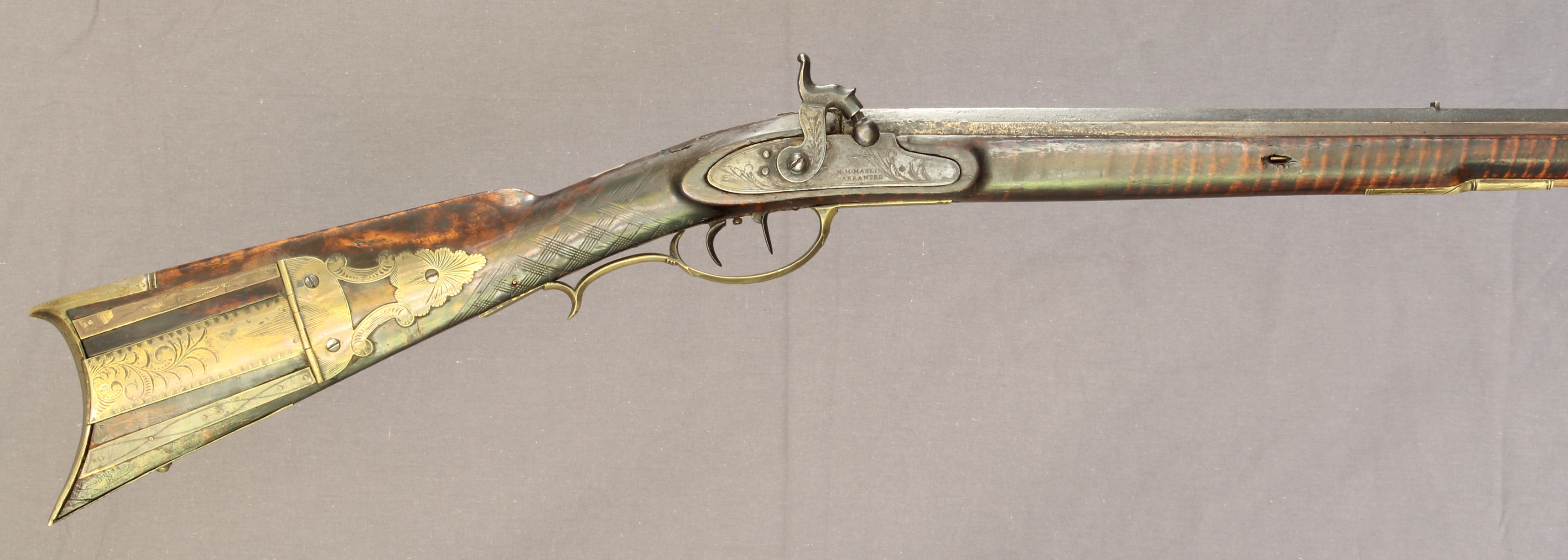Rich, I understand that the concept of longrifle "schools" is passe. I also acknowledge that it is imperfect. It was a long time ago when Kindig and other collectors started noticing characteristics that rifles by different makers had in common and started grouping them into "schools". Kindig, being an antique furniture dealer, appreciated the artistic expressions in the longrifle. He and several others promoted the American longrifle as an art form. They naturally started to categorize many of the rifles as is common in art history and even scientific fields.
Kindig's 1960
Thoughts on the Kentucky Rifle in its Golden Age, George Shumway's
Longrifles of Note, Pennsylvania from 1968, and James R. Johnston's 1976
Kentucky Rifles & Pistols 1750-1850 were organized around the concept of schools. But I don't think any of them meant for the concept to become a dogma. They knew the limitations of the concept and the exceptions.
Kindig had rifles in his massive collection that didn't fit in any of the schools. Shumway was aware of these and others in other collections.
As passe as the concept is today, I still see new books on southern rifles coming out that are doing pretty much the same thing in terms of categorization, though they may not use the term "schools".
I still find it useful. If I see a rifle at a gun show or a picture of one somewhere, I naturally look for characteristics that might help me understand where it was made and even when. This happens even before I know the name on the gun, if it has one. I bet you do too. We're using what we've learned about "schools" of longrifles to put a new-to-us rifle into context. We may be doing it consciously or unconsciously.
I liked your explanation of the "Early" versus "Late" Lancaster kits and guns being promoted by various companies or small business. And I share your frustrations with their inaccuracies, generalizations, and misuse of the terms for the sake of marketing.
We seemed to have touched a nerve with you, though, when the question was asked, "so what school of thought would a full stock H.Leman flinter be from?" I tried to answer it in terms of Leman's early rifles barely fitting in the "Late" Lancaster description, but I also tried to make the point, not to successfully, evidently, that he had a long career and most of his rifles don't fit. Leman pretty quickly developed his own style that kept some of the Lancaster architecture, but none of the other characteristics such as mounts and decoration.
This Leman rifle from Jim Gordon's collection very much fits the "Late" Lancaster style.
These, which are versions of Jack Brooks' bench copy of a Leman Indian rifle do not.
I have a Jacob Fordney original that also fits the "Late" Lancaster style. Fordney, by the way was a contemporary of Leman's being just four years his senior. Jacob apprenticed to Jacob Gumpf while Henry Leman apprenticed to Jacob's brother, Melchoir Fordney.
Jacob Fordney was an early proponent of the percussion system. In 1830, the year Fordney set up his first shop, he ran an advertisement saying, "Guns altered to the Percussion principle, and all other kinds of REPAIRING done in the best manner, and on the shortest notice." That makes it difficult to date my gun which is original percussion and not a conversion. It has an "M.M. MASLIN" marked lock, but that doesn't help much because Maslin was in business as either a lock maker or lock importer from 1822 to at least 1847 and probably later. The rifle could date anytime from the 1830's through the 1840's.
Many Jacob Fordney rifles have back action locks that would date to the 1850's and 1860's. The architecture on many of these deviates from the Lancaster style, but Jim Gordon has one Jacob Fordney with a back action lock that is very much in the "Late" Lancaster style in architecture and mounts. Some customers must have still preferred the old look even in a rifle built in the 1850's.







